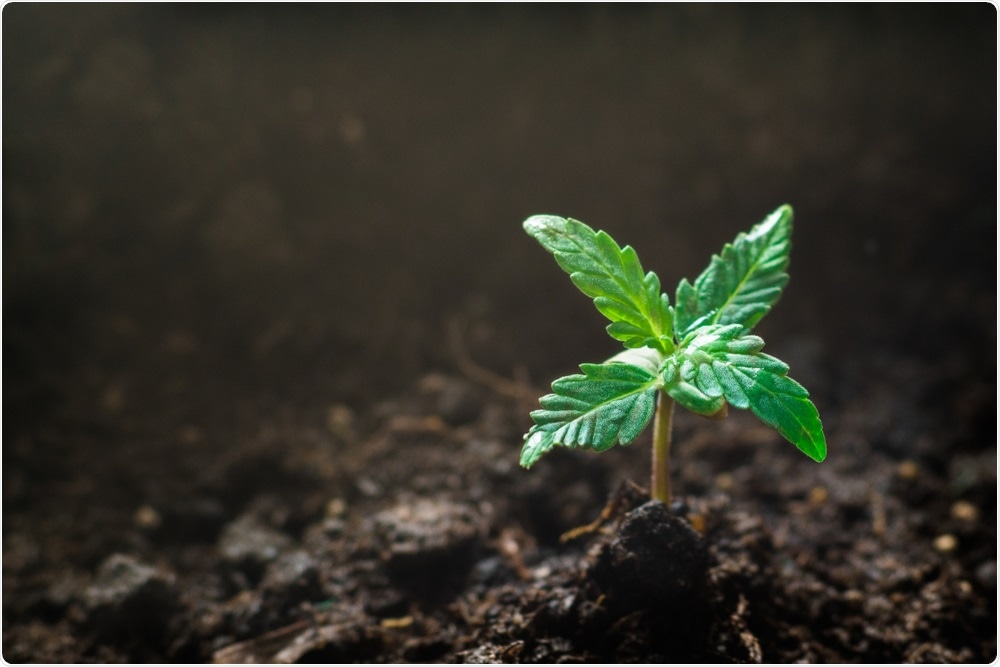
Researchers harness the pain-relief properties of cannabis to develop new pain killers
Researchers at the University of Guelph have uncovered how the cannabis plant produces pain-relieving molecules that are thirty times more effective at reducing inflammation than aspirin. Tariq Akhtar and colleagues hope the discovery will lead to the development of naturally-derived drugs that will provide potent pain relief, without causing problematic side effects and addiction.
 Lifestyle Discover | Shutterstock
Lifestyle Discover | ShutterstockUnderstanding how these molecules are produced could help researchers tackle the opioid crisis. "There's clearly a need to develop alternatives for relief of acute and chronic pain that go beyond opioids," says Akhtar.
Legalization of cannabis in Canada spurs new research
Researchers have known about the potent anti-inflammatory properties of cannabis since 1985, but further research into how the molecules work has been limited by tight regulation of cannabis research.
In recent years, a global socio-political movement aiming to legalize Cannabis sativa (C. sativa) has afforded researchers the opportunity to explore the metabolic diversity of the versatile plant. Since Canada legalized cannabis use and given the advances that have been made in the field of genomics, scientists have been able to investigate the molecules unhindered.
Aside from the psychoactive component tetrahydrocannabinol (THC) and related cannabinoids such as cannabidiol (CBD) that are found in C. sativa, there are numerous specialized metabolites that are also thought to contribute the plant’s medicinal effects. Two examples of such compounds are the prenylated flavonoids called cannflavins A and B.
Benefits of cannflavins over opioids
Currently, people suffering with chronic pain often rely on opioids. Although opioids are effective at relieving pain by blocking pain receptors in the brain, their use is also associated with the risk of significant adverse side effects and addiction. Cannflavins, on the other hand, would target pain using a different approach that reduces inflammation directly.
These cannflavins are not psychoactive, meaning they do not affect the mind like opioids or THC do because they target pain directly.
The molecules could potentially be used to create new painkillers that are not associated with any risk of addiction.
How the cannabis plant produces cannflavins
As reported in the journal Phytochemistry, Akhtar and team used a combination of phylogenomic and biochemical techniques to investigate which genes and enzymes are required for the biosynthesis of the two molecules, which are known to be thirty times better at reducing inflammation than Aspirin.
Akhtar says the says the investigation process is relatively straightforward nowadays:
The team now reports that they identified an aromatic prenyltransferase in C. sativa that catalyzes the regiospecific addition of either geranyl diphosphate or dimethylallyl diphosphate to the methylated flavone, chrysoeriol, to produce cannflavins A and B, respectively.
They also found evidence that an O-methyltransferase (CsOMT21) encoded within the plant’s genome specifically converts a flavone called luteolin to chrysoeriol.
The authors say the results suggest that the reaction sequence for the biosynthesis of cannflavins A and B is as follows: luteolin → chrysoeriol → cannflavin A and cannflavin B.
Producing cannflavins in the lab
Co-author Steven Rothstein says that the problem with these molecules is that they are present at such low levels in cannabis, which makes it unfeasible to engineer the plant so that it produces more of them. The team is now working on a biological system to create the molecules that would provide the opportunity to engineer them in large quantities outside of the plant.
“Taken together, the identification of these two unique enzymes represents a branch point from the general flavonoid pathway in C. sativa and offers a tractable route towards metabolic engineering strategies that are designed to produce these two medicinally relevant Cannabis compounds,” writes the team.
The researchers have now licensed a patent to synthesize the cannflavins outside of the cannabis plant in collaboration with a Toronto-based company called Anahit International Corp.
Chief operating officer at Anahit, Darren Carrigan, says the company is looking forward to working with the University of Guelph researchers to develop safe and effective anti-inflammatory medicines from cannabis phytochemicals that would provide an alternative to non-steroidal anti-inflammatory drugs.
The company will commercialize the application of cannflavin A and B to be accessible to consumers through a variety of medical and athletic products such as creams, pills, sports drinks, transdermal patches and other innovative options, he adds.
Journal reference:
Rea, K. A., et al. (2019). Biosynthesis of cannflavins A and B from Cannabis sativa L. Phytochemistry. https://doi.org/10.1016/j.phytochem.2019.05.009























.png)











No hay comentarios:
Publicar un comentario